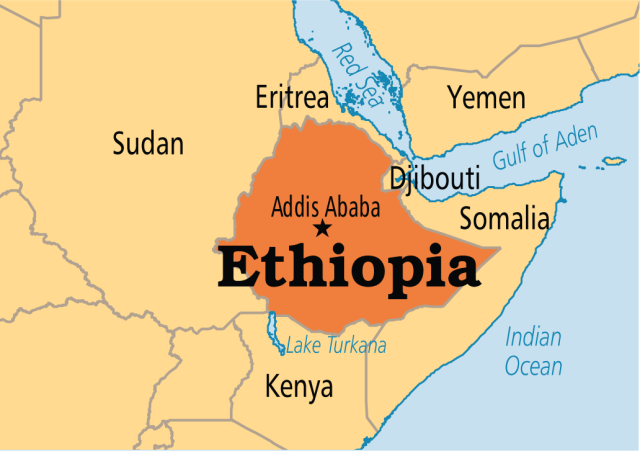 Amid the growing and deafening crescendo of fake news, divisive propaganda and the same old ego-based rhetoric (insulting, yelling and barking at each other) in the Diaspora blogosphere, here are two refreshing and well informed analysis of current affairs in Ethiopia. The first one is written by Awol Allo focusing on Ethiopia’s new foreign policy. And the second article by Goitom Gebreluel on Aljazeera asks a timely question: Should Ethiopia stick with ethnic federalism? (Image: Ethiopia on map/Wikimedia)
Amid the growing and deafening crescendo of fake news, divisive propaganda and the same old ego-based rhetoric (insulting, yelling and barking at each other) in the Diaspora blogosphere, here are two refreshing and well informed analysis of current affairs in Ethiopia. The first one is written by Awol Allo focusing on Ethiopia’s new foreign policy. And the second article by Goitom Gebreluel on Aljazeera asks a timely question: Should Ethiopia stick with ethnic federalism? (Image: Ethiopia on map/Wikimedia)
The Abiy Doctrine: One year of Ethiopia’s new foreign policy
BY AWOL ALLO | African Arguments
APRIL 5, 20190
It’s not just domestically that the new Prime Minister has shaken things up in his first year.
When Abiy Ahmed became Ethiopia’s prime minister a year ago on 2 April, he inherited a deeply divided and fractured country. The economy was in free fall, a state of emergency had been declared, and an agitated mass was calling for revolutionary change. Since then, his administration has been praised for pulling the country back from the brink. The government has enacted a series of progressive and transformational reforms, which have made headlines internally and been widely scrutinised.
Much less, however, has been said about Abiy’s foreign policy.
When he entered office, the young prime minister promised to transform Ethiopia’s foreign policy and extend the country’s influence. In his inaugural speech, Abiy noted the complex history of the region. “The Horn of Africa is gripped by lots of crisis,” he said, “where many forces with different interests and objectives are scrambling and where there are many complex entanglements.”
He also spoke of Ethiopia’s commitment to pan-Africanism and its “notable role in regional, continental, and global matters.” He vowed to strengthen this position and stand with “our African brothers in general and with our neighbours in particular…in times of hardship as well as in times of happiness.”
These kinds of promises are not uncommon in inaugural speeches and few expected Abiy to follow through. That is until he made the unexpected move to end twenty years of intractable military stalemate with neighbouring Eritrea and began a flurry of visits to countries in the region and the Middle East. Within just three months of assuming office, Abiy had capably and courageously resolved the long-running conflict with Eritrea and begun to consolidate multiple strategic partnerships within and beyond the region.
—
Related:
Should Ethiopia stick with ethnic federalism? (Aljazeera)
Join the conversation on Twitter and Facebook.

























